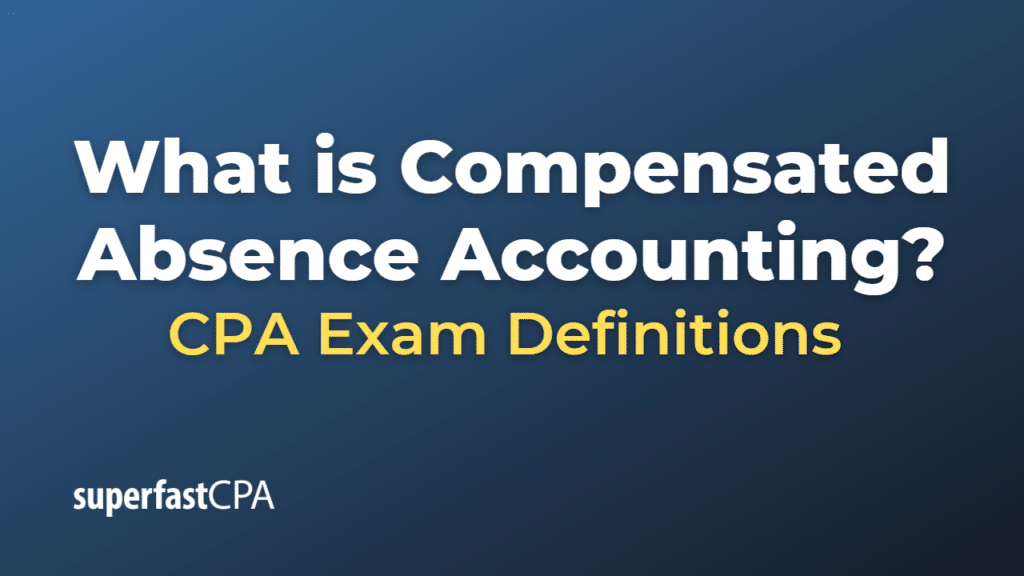Compensated Absence Accounting
Compensated Absence Accounting refers to the process of recognizing and recording the financial implications of paid time off provided to employees, such as vacation, sick leave, or personal days. Under the accrual accounting method, companies are required to account for compensated absences as a liability if certain conditions are met, as these benefits represent a future obligation the company must fulfill.
According to the U.S. Generally Accepted Accounting Principles (GAAP) and International Financial Reporting Standards (IFRS), companies should recognize a liability for compensated absences when:
- The employees’ right to compensated absences is attributable to services already rendered.
- The obligation is an accrued benefit, meaning it accumulates over time.
- Payment of the compensated absence is probable.
- The amount of the liability can be reasonably estimated.
When these conditions are met, companies must estimate the value of the compensated absences and record them as a liability on their balance sheet, typically under “accrued expenses” or “other current liabilities.” The estimation process usually involves considering factors such as employees’ pay rates, historical patterns of time off usage, and any carryover or forfeiture policies.
In addition, when employees use their compensated absences, the company will reduce the recorded liability and recognize an expense in the income statement, typically under “salaries and wages” or a similar line item.
Compensated Absence Accounting ensures that a company’s financial statements accurately reflect the obligations associated with employees’ time off benefits, providing a more accurate picture of the company’s financial position and performance.
Example of Compensated Absence Accounting
Here’s a simple example of Compensated Absence Accounting for a hypothetical company, “DEF Corporation.”
Assumptions:
- DEF Corporation has 10 employees.
- Each employee is entitled to 10 paid vacation days per year.
- Employees earn $200 per day.
- At the end of the year, 5 employees have used all of their vacation days, and 5 employees have 2 unused vacation days each.
- DEF Corporation has a policy that allows employees to carry over unused vacation days to the next year.
Calculation:
- Calculate the total unused vacation days: 5 employees * 2 unused days = 10 unused vacation days.
- Estimate the liability for the unused vacation days: 10 unused days * $200 per day = $2,000.
- At the end of the year, DEF Corporation will record a liability for the unused vacation days: Debit: Vacation Expense (Income Statement) $2,000 Credit: Accrued Vacation Liability (Balance Sheet) $2,000 This entry records the estimated liability for the unused vacation days and recognizes the associated expense.
- Next year, when employees use their carried-over vacation days, DEF Corporation will reduce the liability and recognize the related salary expense: Debit: Accrued Vacation Liability (Balance Sheet) $2,000 Credit: Salaries Payable (Balance Sheet) $2,000 This entry reduces the liability for the used vacation days and records the salary expense as employees use their time off.
This example demonstrates how Compensated Absence Accounting helps companies estimate and record the financial implications of employees’ unused vacation days, providing a more accurate representation of their financial position and obligations.













